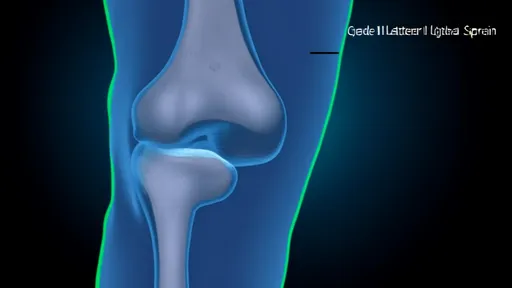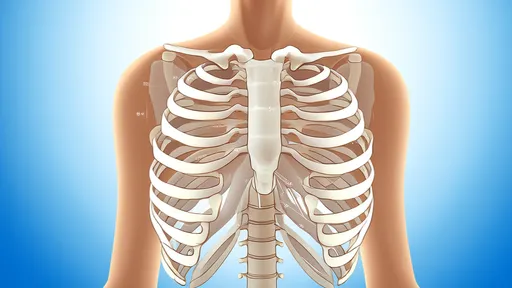The growing popularity of energy drinks has sparked significant interest in their physiological effects, particularly on cardiovascular health. Recent studies utilizing electrocardiogram (ECG) monitoring have begun to unravel the complex relationship between these caffeine-laden beverages and heart function. As millions worldwide consume energy drinks for a quick boost, researchers are investigating whether these products may trigger subtle yet meaningful changes in cardiac rhythm.
Energy drinks represent a multi-billion dollar industry, with formulations typically containing caffeine concentrations far exceeding those found in coffee or tea. Many brands combine caffeine with additional stimulants like taurine, guarana, and B-vitamins, creating a pharmacological cocktail that demands closer scrutiny. ECG monitoring provides an objective window into how these compounds influence the heart's electrical activity during both rest and physical exertion.
Clinical observations reveal that energy drink consumption frequently correlates with modest increases in heart rate. The mechanism appears straightforward - caffeine blocks adenosine receptors, leading to increased sympathetic nervous system activity. However, ECG data paints a more nuanced picture, showing that some individuals experience more pronounced electrophysiological changes than others. This variability suggests that genetic factors or underlying cardiac conditions may influence individual susceptibility.
The QT interval, representing ventricular depolarization and repolarization, has emerged as a particular focus of investigation. Several controlled studies utilizing continuous ECG monitoring have documented QT prolongation following energy drink consumption. While the degree of prolongation typically remains within normal limits for healthy individuals, these findings raise important questions about potential risks for those with congenital long QT syndrome or taking medications that affect cardiac repolarization.
Exercise physiology research incorporating ECG monitoring has yielded particularly insightful data. When subjects consume energy drinks before physical activity, their hearts demonstrate exaggerated responses compared to caffeine alone. The combination of dehydration from exercise and the diuretic effect of caffeine may create perfect conditions for electrolyte imbalances that could theoretically predispose to arrhythmias. However, it's crucial to note that documented cases of serious arrhythmias remain relatively rare in the medical literature.
Sleep deprivation studies using ambulatory ECG monitors show particularly striking results. When energy drinks are used to combat fatigue, the cardiovascular system appears to bear a double burden - the stress of sleep deprivation compounded by pharmacological stimulation. ECG patterns in these conditions often resemble those seen in moderate stress states, with reduced heart rate variability suggesting impaired autonomic nervous system balance.
Manufacturers argue that when consumed responsibly by healthy adults, energy drinks pose minimal cardiac risk. They point to studies showing that the observed ECG changes typically fall within normal physiological ranges. However, independent researchers counter that most studies examine single servings, while real-world consumption patterns often involve multiple drinks consumed rapidly or combined with alcohol - scenarios that have received less rigorous scientific evaluation.
Pediatric cardiologists have expressed particular concern about energy drink use among adolescents. The developing cardiovascular system may respond differently to stimulants, and case reports describe teenagers presenting to emergency departments with palpitations and abnormal ECG findings after consuming these products. Several medical associations now recommend that individuals under 18 avoid energy drinks altogether.
Emerging ECG technologies are enabling more sophisticated analysis of energy drink effects. High-resolution ECGs can detect subtle changes in cardiac repolarization that standard monitors might miss. Some research teams are employing beat-to-beat variability analysis to assess how energy drinks affect the heart's rhythmic stability. These advanced techniques may help explain why a small percentage of consumers report feeling "heart flutter" after consumption despite normal basic ECG parameters.
The debate over energy drink safety continues as new research emerges. While occasional consumption by healthy adults appears to carry minimal risk for significant arrhythmias, ECG monitoring studies consistently demonstrate that these beverages do affect cardiac electrophysiology. The clinical significance of these changes remains an active area of investigation, with researchers calling for more long-term studies and increased awareness of potential interactions with medications or pre-existing conditions.
As consumers increasingly turn to wearable ECG devices like smartwatches, we may gain new insights into real-world effects of energy drinks. Citizen science initiatives could potentially collect vast amounts of ECG data before and after consumption across diverse populations. Such data might help identify subpopulations particularly sensitive to these products' cardiac effects, guiding more personalized recommendations about their use.
The world of fitness is constantly evolving, with new trends emerging from every corner of the globe. While some workouts stand the test of time, others are so peculiar they make you wonder - who thought this was a good idea? From goat yoga to face slapping workouts, humanity's quest for better health has spawned some truly unconventional practices that blur the line between genius and madness.
The fitness world is buzzing with excitement over the latest viral workout trend—Divine Beats Training 2.0. This high-energy program combines pulsating electronic dance music with scientifically optimized movement patterns, creating what enthusiasts call "the first workout that feels like a nightclub experience." Unlike traditional exercise routines, this system uses precisely timed musical drops and bass-heavy beats to trigger explosive physical responses from participants.
In an era where office workers spend increasingly long hours tethered to their desks, a peculiar fitness trend has emerged from Japan that turns mundane stationery into tools for wellness. The "Stationery Workout" movement, particularly its signature "Ruler Balance" technique, has gained surprising traction among white-collar professionals seeking discreet ways to stay active during marathon work sessions. This unconventional approach transforms everyday office supplies into instruments of physical conditioning, blending productivity with subtle exercise.
In the age of social media dominance, fitness influencers have created countless viral workout trends that promise quick results. However, many of these popular movements can cause serious injuries when performed incorrectly or excessively. Medical professionals and physical therapists are increasingly warning about the dangers lurking behind some deceptively simple-looking challenges.
Fitness gaming has taken the world by storm, and Nintendo's Ring Fit Adventure stands out as one of the most innovative entries in this genre. While many players enjoy the game at face value, there's a hidden layer of depth that few explore—the secret intensity settings. These undisclosed options can transform your workout, pushing you beyond the default limits. For those seeking a more challenging experience, unlocking these hidden features can be a game-changer.
The world of pet entertainment has taken a thrilling turn with the rise of obstacle course designs tailored specifically for feline athletes. Cat owners and enthusiasts are increasingly embracing the concept of creating dynamic, engaging, and challenging courses that cater to their pets' natural instincts. These obstacle courses, often referred to as "cat obstacle course" in certain communities, blend creativity with functionality to provide cats with both physical exercise and mental stimulation.
In today's fast-paced world where stress has become an inevitable part of daily life, people are constantly seeking unconventional yet effective methods to alleviate tension. One such surprising but increasingly popular technique involves the use of ordinary bubble wrap - that ubiquitous packaging material that most of us instinctively pop when it comes our way. What began as an unconscious fidgeting behavior has evolved into structured stress relief training programs harnessing the therapeutic potential of this simple material.
The ancient Chinese literary masterpiece Dream of the Red Chamber is not merely a tale of aristocratic decline—it is also a treasure trove of traditional wellness practices. Among its pages lie subtle references to health-preserving exercises, many of which were practiced by the elite women of the Jia household. Today, these centuries-old movements are being reinterpreted through a modern lens, offering urban dwellers an unexpected bridge between classical literature and contemporary self-care.
The growing popularity of energy drinks has sparked significant interest in their physiological effects, particularly on cardiovascular health. Recent studies utilizing electrocardiogram (ECG) monitoring have begun to unravel the complex relationship between these caffeine-laden beverages and heart function. As millions worldwide consume energy drinks for a quick boost, researchers are investigating whether these products may trigger subtle yet meaningful changes in cardiac rhythm.
Walking is often touted as one of the simplest and most effective forms of exercise, accessible to almost everyone regardless of fitness level. However, as the trend of hitting extreme step counts—such as 30,000 steps a day—gains popularity, concerns about joint wear and tear have emerged. While moderate walking is beneficial, pushing the body to such extremes may come at a cost, particularly for the knees, hips, and ankles. This raises an important question: how much is too much when it comes to daily steps?
The crisp morning air, the quiet streets, and the promise of a fresh start make dawn an irresistible time for runners. Yet beneath the serenity of sunrise jogs lies a hidden danger few anticipate – exercise-induced syncope, particularly when running in a fasted state. This phenomenon isn’t merely about "feeling lightheaded"; it’s a temporary loss of consciousness that can lead to catastrophic falls or accidents. As more people adopt fasting routines or squeeze workouts before breakfast, understanding why this happens and how to respond could mean the difference between a close call and a tragedy.
Ligamentous laxity caused by overstretching is a complex clinical condition that often requires advanced imaging for accurate diagnosis. Magnetic resonance imaging (MRI) has emerged as the gold standard for evaluating ligament integrity, providing unparalleled soft tissue contrast that allows clinicians to assess the degree of ligament injury and subsequent laxity. This imaging modality reveals not only the macroscopic tears but also subtle microstructural changes that occur when ligaments are stretched beyond their physiological limits.
For decades, the idea of converting fat into muscle—or vice versa—has been a topic of fascination in fitness and medical communities. While the concept is often oversimplified in popular media, the biological mechanisms behind this transformation are complex and deeply rooted in cellular metabolism. Understanding how the body regulates the interplay between adipose tissue and muscle mass requires delving into the biochemical pathways that govern energy storage and utilization.
The medical community has long grappled with the complexities of localized cryogenic burns, a unique injury pattern that occurs when skin and underlying tissues are exposed to extreme cold. Unlike thermal burns which follow more predictable pathways, cryogenic injuries present distinct clinical challenges due to their delayed presentation and progressive tissue damage. Recent multicenter studies have shed new light on the pathophysiology and optimal treatment approaches for these frostbite-like injuries caused by industrial accidents, medical cryotherapy mishaps, and improper handling of liquefied gases.
The medical community has long been fascinated by the intricate relationship between skeletal deformities and their underlying causes. Among these, costal arch deformities, particularly those involving the lower ribs, present a unique challenge for both diagnosis and treatment. Often referred to as "corset rib syndrome" or "lower rib cage deformity," this condition manifests as an abnormal inward curvature of the lower ribs, frequently accompanied by chronic pain and respiratory limitations. The condition's nomenclature stems from its historical association with tight-lacing corsets, though modern cases often arise from congenital factors or trauma.














